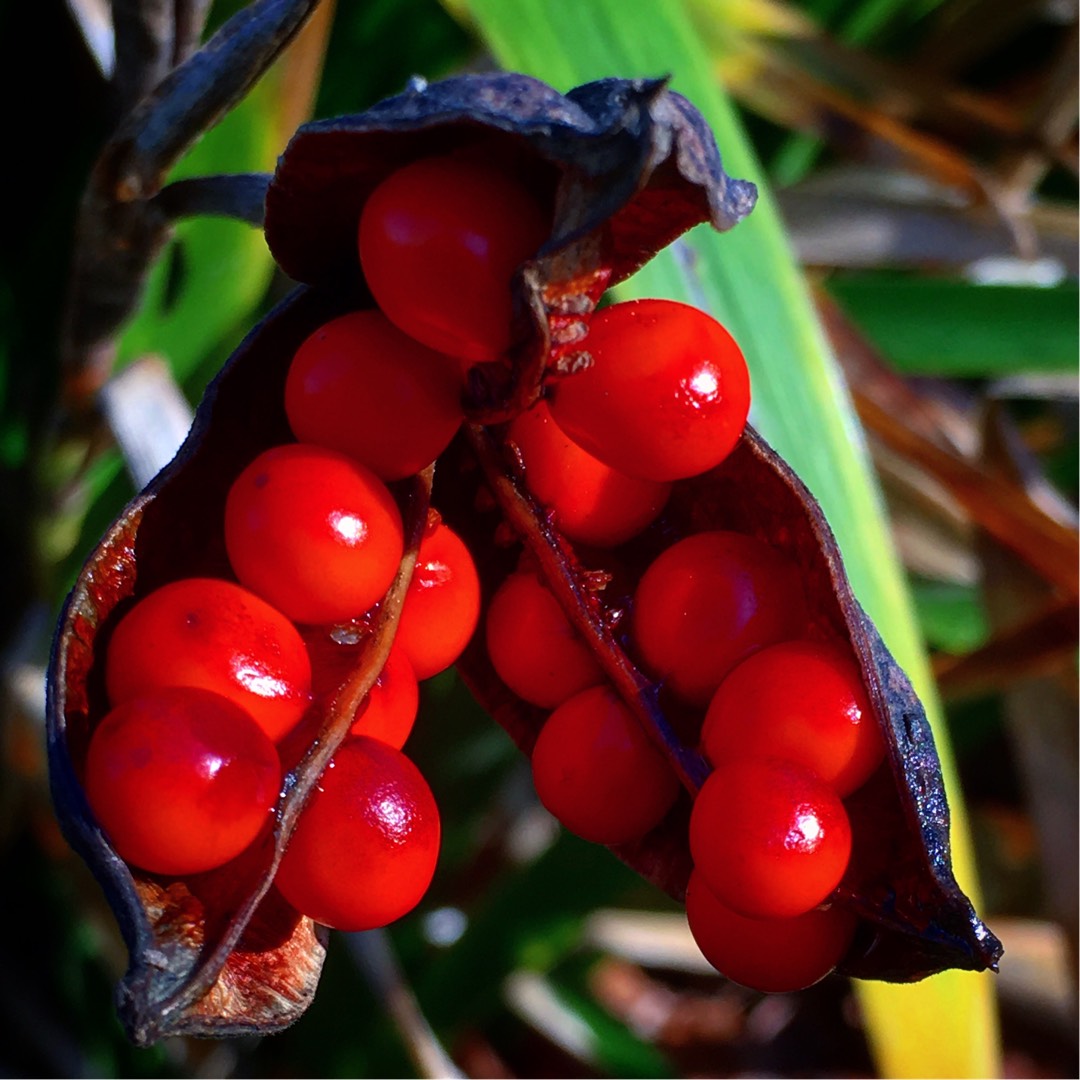
Iris foetidissima
Stinking Iris
This plant is the most tolerant of dry and shaded places. The pale purple/yellow flowers are underwhelming, although the seed pods split in late autumn to reveal bright orange berry like seeds. It self seeds all too well. I would allow this as ground cover in wild woodland, but I wouldn't bother with it in a flower garden. If roast beef smelt like this, I would go vegetarian!
-
Full sun to partial shade
-
Occasional watering
-
Frost Hardy: 23F (-5°C)
-
Light and free draining
Common name
Stinking Iris
Latin name
Iris foetidissima
type
evergreen perennial
family
Iridaceae
ph
6.0 - 7.0 Acid - Neutral
Plant & bloom calendar
-
Best time to plant
-
When the plant will bloom
full grown dimensions
 0.40 M
0.60 M
0.40 M
0.60 M
Iris foetidissima
This plant is the most tolerant of dry and shaded places. The pale purple/yellow flowers are underwhelming, although the seed pods split in late autumn to reveal bright orange berry like seeds. It self seeds all too well. I would allow this as ground cover in wild woodland, but I wouldn't bother with it in a flower garden. If roast beef smelt like this, I would go vegetarian!
Flowering Season
From Mid Spring TO Late Autumn
As the genus is complex, the flowering characteristics vary greatly however, as a generalisation, Iris blooms start to appear during spring and depending on variety, may be evident throughout the summer and into autumn.
Planting in late Summer
From Mid Summer TO Late Summer
Ideally the Iris plant would need to be planted in a sunny spot so that it can receive at least six hours of sun a day as well as being planted in well drained but moist soil. They do well near water but should be at least 6 inches above water level. Avoid hoeing around the base of the plants as the roots are near the surface and easily damaged. Plenty of mulch can help avoid weed growth around them, although rhizomatous varieties should not be mulched, as this could rot the rhizomes.
Propagating by division
From Mid Autumn TO Late Autumn
Split the irises every year, immediately after flowering has ended. At this point the early summer leaves and flower stems have started to die back, and the late summer leaves have started to grow. Split individual plants with a light spade, leaving the part to be retained undisturbed in the soil. Remove about 30-50% of the total plant mass. The aim is to leave plants about the size that would fit under an A5 sheet of paper. After splitting, cut back the early-summer leaves on the remaining plants, and cut or break off the flower stems. Finally, top-dress the plants.



























